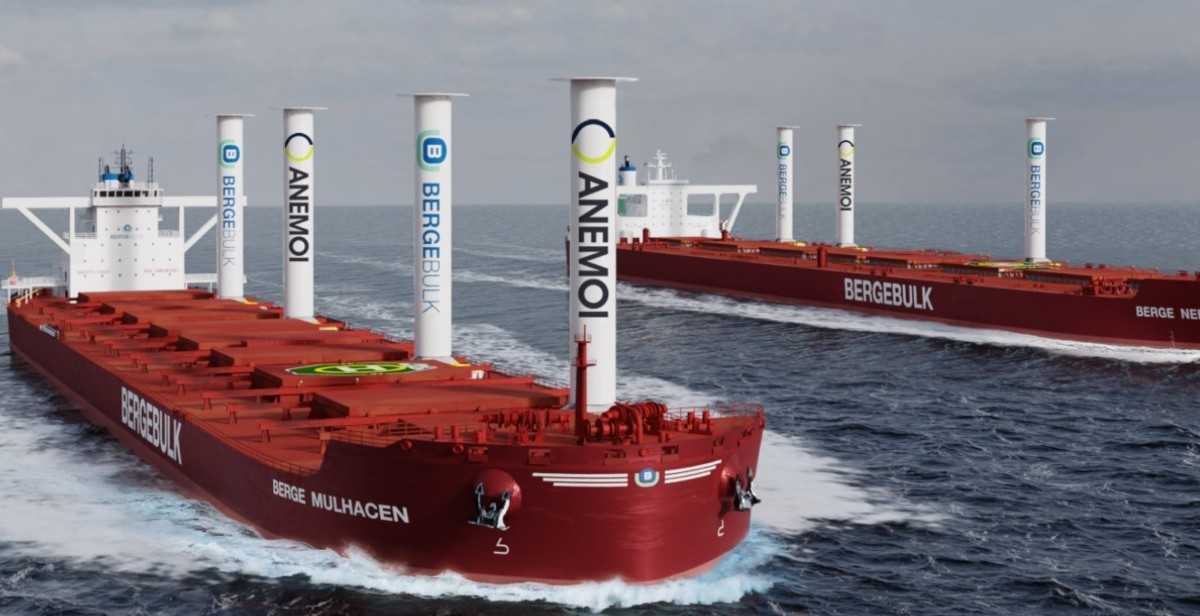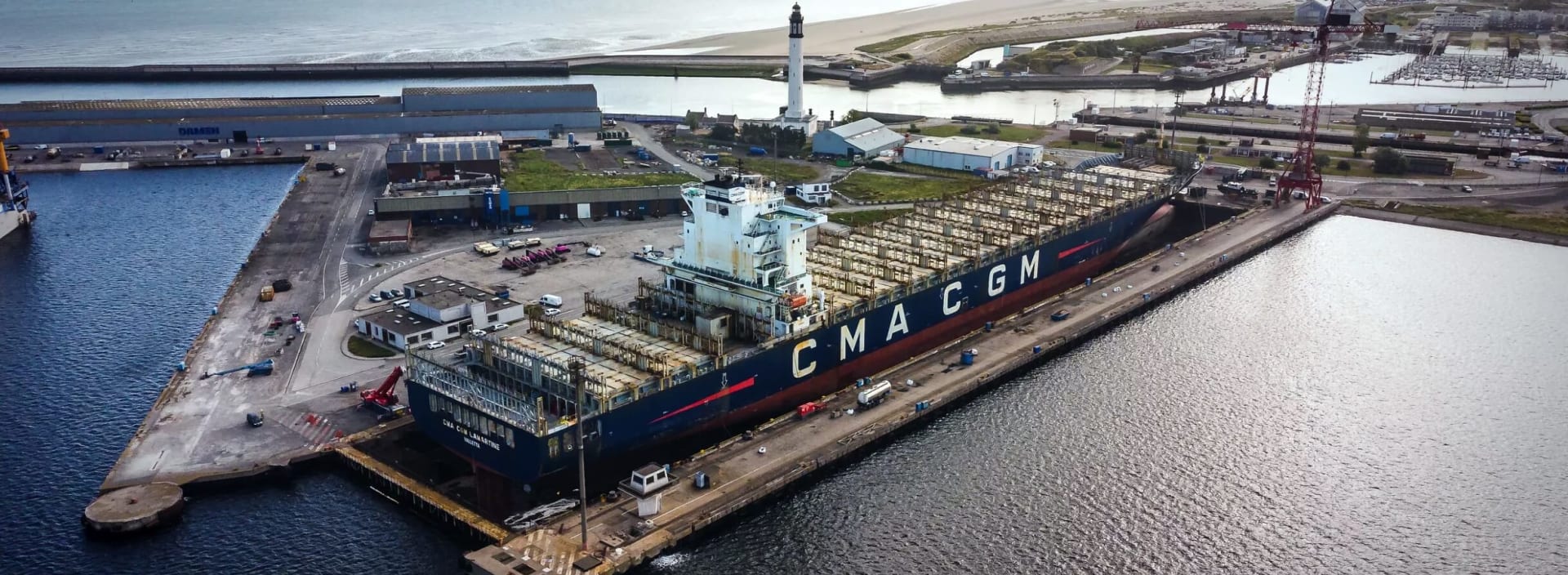Gusts to gales for wind propulsion take-up

Up to 100 wind-assisted ships anticipated by 2025
Sails might be more associated with ships of the 1800s, but in pursuit of ever-lower emissions, wind power is making a comeback and there are now more large oceangoing vessels with wind propulsion systems fitted than ships burning alternative fuels.
According to the International Windship Association, there are 21 large vessels under some type of wind-assisted technology today, including tankers, bulk carriers and vehicle carriers. By the end of 2023, this number could jump as high as 50. By 2025, the forecast surges to 100 wind-assisted ships. The potential is encapsulated in IWSA’s claim that the 2020s is the “decade of wind propulsion”. In support of these predictions, a 2019 UK government-funded study estimated that 37,000-40,000 ships, or 40%-45% of the global fleet, could harness the power of the wind by 2050, while EU research has forecast that up to 10,700 wind propulsion installations could be in place by 2030 covering 50% of the bulk carrier market and up to 65% of tankers, removing 7.5 million tonnes of CO2.
There are three main concepts for wind-assisted propulsion: the wing sail, the kite sail and the Flettner rotor. Of those, the Flettner rotor system has emerged as a front runner. Invented by Anton Flettner in the 1920s, Flettner rotors comprise tall cylinders mounted on a ship’s deck that rapidly rotate with the wind and propel the vessel forward.
"With pressure from end users, large charterers are looking for myriad solutions to lower shipping emissions; wind propulsion is one fix".
Charterers’ choice
Cargill, for example, is preparing to test BAR Technologies’ WindWings wind sail technology on Mitsubishi’s 80,962-dwt 2017-built Pyxis Ocean. The WindWings are expected to generate average fuel savings of 30%. Jan Dieleman, president of Cargill’s Ocean Transportation business, has reportedly said that the company plans to charter at least 20 new wind-assisted ships in the coming years.
Japanese shipping company Mitsui O.S.K. Lines, meanwhile, has installed a hard sail system on board a bulk carrier developed under the Wind Challenger project at Oshima Shipbuilding. The vessel is scheduled for delivery in October this year.
Then, Singapore-based bulk carrier owner Berge Bulk, which has 85 vessels in its fleet, has signed agreements with Anemoi Marine Technologies to equip two of its vessels with four folding rotor sails each. The first vessel, the 388,000 dwt, 2012-built Berge Neblina, was made ‘wind-ready’ earlier this year with the structural integration required for the installation carried out during a scheduled dry dock. Four of Anemoi’s large folding deployment rotor sails will be installed to improve vessel performance. Folding rotor sails can be lowered from the vertical to mitigate the impact on air draught and cargo handling operations. A second vessel, the 210,000 dwt, 2017-built Berge Mulhacen, will also receive four folding rotor sails. Anemoi predicts that the four-rotor system will save Berge Bulk 1,200-1,500 metric tons of fuel per vessel each year.
"Class rules are having to keep pace with wind propulsion supply, while research and development is ongoing to hone and perfect the technology".
Rules and regs
Lloyd’s Register has granted Approval in Principle (AIP) for a Shanghai Merchant Ship Design and Research Institute (SDARI) designed 210,000 dwt Newcastlemax bulk carrier installed with Anemoi Rotor Sails. The Newcastlemax AIP is part of a joint development project signed in 2020 between Anemoi Marine Technologies, Lloyd’s Register, and SDARI.
Bureau Veritas has also developed two new notations for wind-assisted propulsion, which provide load cases and coefficients for freestanding rigs, wing sails, kite sails and wind turbines. The WPS-1 notation is for wind-powered ships with standing rigging, and the WPS-2 notation concerns vessels with both standing and running rigging.
Meanwhile, an EU project aims to take wind propulsion to the next level. The EU-Interreg North Sea Region project ‘WASP: Wind Assisted Ship Propulsion’ - co-funded by the European Regional Development Fund - brings together universities, wind-assist technology providers with ship owners to research, trial and validate the operational performance of a selection of wind propulsion solutions. The overall aim of the project is the realisation of a greener North Sea transport system through the harvesting the region’s wind potential.
The project describes wind assisted ship propulsion as “one of the most promising contributions towards sustainable shipping. It enables ships to exploit an emission-free energy source that is delivered directly to the ship while it is at sea.”
As part of the WASP Project, rotor sails, suction wings and wing sails have been installed on five commercial ships and third-party validations have been conducted to verify actual fuel savings achieved. Over the course of the project, WASP expects to save 5,594 tonnes of heavy fuel oil, 17,637 tonnes of CO2 and generate 27.6 million KWH of electricity.
Hurdles still to overcome
But there are still constraints that need to be overcome for wind-assisted propulsion to be a viable choice for all operators.
‘Availability’ refers to wind as a “variable, changeable element”, meaning that wind propulsion alone might not be enough to meet a ship’s power needs. ‘Space’ notes that the masts that support the rigid and rotating sails installed onboard ships can measure up to 80 metres high, which take up significant space on deck.
‘Design’ sees both newbuilds and retrofitted in-service vessels face design and technical obstacles when integrating wind-assisted propulsion systems onboard. For example, these include structural modifications for reinforcement and stabilising elements for retrofitted vessels. ‘Cost’ relates to the current high capital investment needed for wind propulsion systems. Although this is expected to drop as demand increases, for the time being it is difficult to achieve economies of scale, notes BV.
Finally, ‘regulations’ refers to a lack of official rules or guidelines for wind-assisted propulsion systems from the IMO. Regulatory frameworks will need to be adapted for wider acceptance to be achievable.

